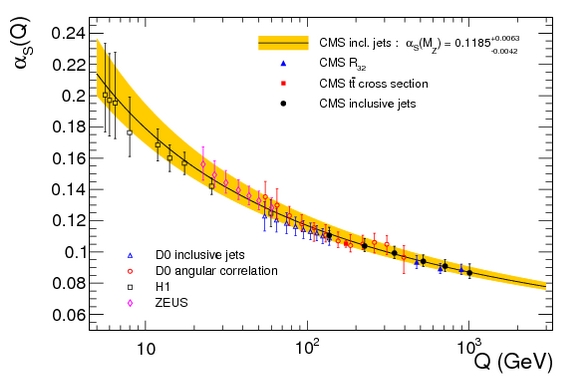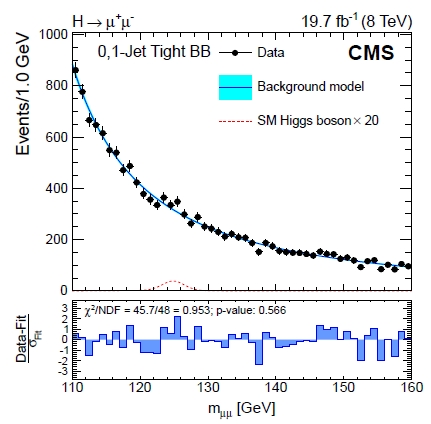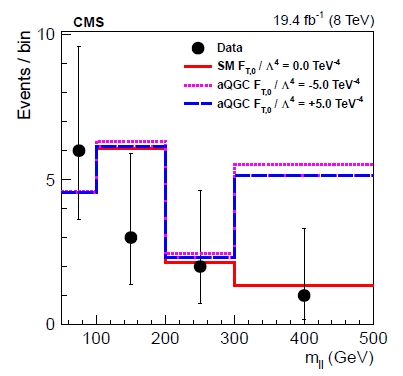Rather than focusing on any single result, below I give some highlights of the most recent publications by CMS. Another post will discuss ATLAS results in a few days.
One interesting and competitive new measurement -although one produced with only 2011 data taken at 7 TeV- is the one of the strong coupling constant, alpha_s. Alpha_s is in fact not a constant, but a number which depends on the energy at which quantum chromodynamical processes take place. It dictates the strength of the interaction between quarks and gluons, and its determination is not an easy task. The recent preprint by CMS discusses the measurement of parton distribution functions of the proton from the measurement of inclusive jet cross sections, and then uses the same data to determine the strong coupling constant at high values of energy - well, rather at high values of four-momentum transver, Q, which is the quantity on which the coupling directly depends.

A host of past measurements are shown in the graph above (including others from CMS), together with the latest CMS data points (the black dots at high Q on the right). The measurement extracted from the data, which is the one obtained at the highest value of four-momentum transfer, is alpha_s(M_Z) = 0.1185+-0.0019 +0.0053-0.0024, where the first uncertainty is statistical and the second asymmetric one is due to theoretical uncertainties; the value is quoted at the scale equivalent to the mass of the Z boson, as is customary. The yellow band corresponds to the theoretical predictions given the CMS result.
Another recent CMS preprint presents results of the search for the rare Higgs boson decays into muon pairs and electron pairs. While the former will eventually be seen by the LHC as we collect more data, the latter will probably never be observed directly. This is due to the fact that the Higgs boson "couples" to electrons and muons in manner proportional to the mass of these particles - and the muon is 200 times heavier than the electron. Below you can see the mass distribution of pairs of muons in one of the search topologies investigated by CMS.

The signal template shown at the bottom of the upper panel near 125 GeV is the one expected if the Higgs decayed 20 times as frequently to muon pairs as the standard model predicts. The lower panel shows the deviations of the data from the background model. From the absence of a signal in the data an upper limit on the branching fraction is obtained at 0.0016 - meaning that less than one in 600 Higgs bosons decay to muon pairs.
Finally, in a preprint submitted four days ago CMS reports on measurements of vector boson scattering by electroweak processes. The signature sought is one of same-sign dileptons accompanied by two jets with a large rapidity separation (Δη>2.5) and invariant mass above 500 GeV. What this means is that the two bosons are produced together with two "forward jets" resulting from the hadronization of the quarks that originally emitted the interacting bosons. Focusing on same-sign lepton pairs allows to remove much of the backgrounds.

As you can see in the graph above, the data (black points) beautifully follow the prediction of standard model (red histogram), while anomalous couplings would enhance the number of lepton pairs of large invariant mass (blue and pink histograms). The cross section of vector-boson scattering yielding same-sign WWjj pairs is measured by CMS at σ(WWjj)=4.0+2.4-2.0(stat.) +1.1-1.0(syst) femtobarns. From the agreement with SM predictions, limits are set on those possible anomalous couplings.



Comments